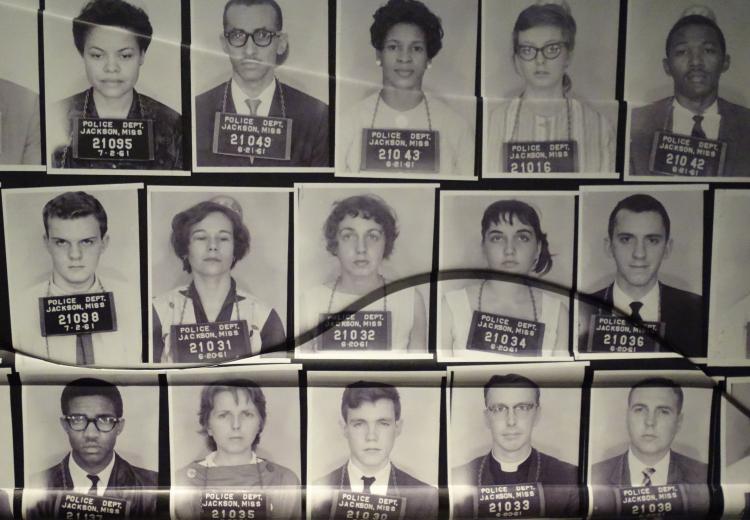JFK, Freedom Riders, and the Civil Rights Movement

Images of Freedom Riders at the Center for Civil and Human Rights in Atlanta, Georgia.
"I was an original 'Freedom Rider.' I was attacked and beaten by the Klu Klux Klan [sic] in Alabama; and I walked among the giants of the Civil Rights Movement and I felt at home. The lumps and bruises on my head are a daily reminder of my commitment and my obligations."
— Charles Person, "My Reflection of Years Gone By"
Most lessons on the 1960s Civil Rights Movement focus on key national leaders such as Martin Luther King Jr., Malcolm X, and President John F. Kennedy. This lesson is no exception; however, it will also look at less well-known members of the civil rights struggle: those whose courageous actions triggered a federal response. This lesson will help students learn more about these members of the grassroots civil rights struggle through the use of primary documents, audio sources, and photographs.
The first part of this lesson focuses on the Freedom Riders. It demonstrates the critical role of activists in pushing the Kennedy Administration to face the contradiction between its ideals and the realities of federal politics. In this case, the Kennedy Administration finally acted in defense of individual rights at the risk of offending powerful Southern politicians.
The second activity revisits the famous Birmingham Movement of 1963. It allows students to learn something about the grassroots protests against segregation and exclusion, the reaction of Alabama and Birmingham officials, and President Kennedy's public response-a renewed commitment to civil rights.
Finally, the 1963 March on Washington remains a touchstone of the Civil Rights Movement, and the "I Have A Dream Speech" will be familiar to teachers and students. Here, that speech is contextualized by three other speeches: President Kennedy's June 11, 1963 speech on civil rights, the John Lewis speech given at the March (in the slightly censored version demanded on the day of the March), and a Malcolm X speech critiquing the March. Collectively, these readings will give students a fuller perspective on the "I Have a Dream" speech, one shaped by the diverse viewpoints of contemporaries.
Guiding Questions
Why did the issue of civil rights divide people in the U.S.?
Whose approach to advancing civil rights appears most plausible?
Why do the speeches and perspectives regarding civil rights in the U.S. given at the time remain relevant today?
Learning Objectives
Evaluate the significance of the Freedom Rides, the 1963 Birmingham Movement, and the 1963 March on Washington to the civil rights movement.
Analyze the speeches and competing perspectives regarding how to establish civil rights protections in the U.S.
Analyze and evaluate the relationship between civil rights activists and the Federal Government.
